Jasmine Grover Study Abroad Expert
Study Abroad Expert
US Student Visa News:
19 June 2025: The US has resumed student visa interviews with one big change — mandatory social media checks. Applicants must list all personal social media accounts used in the past five years and set them to public. Visa officers will review online activity for any anti-American sentiment or concerning content. This rule applies to all F, M, and J visa applicants. Inactive and secondary accounts must also be disclosed.
29 May 2025: The US government has halted scheduling new international student visa interviews at consulates worldwide, as it prepares to expand its social media vetting process.
USA Study Visa Highlights:
- Visa Types: There are 3 US student visa types: F-1 visa for academic study, M-1 for vocational training, and J-1 for exchange programs.
- Visa Application Fee: The application cost for US Visa for Indian students is currently $185 which is paid online directly to the US Department of State.
- SEVIS I-901 Fee: The SEVIS fee is paid electronically before your visa interview and is around $350.
- Requirements: To get a US student visa, you'll need acceptance by a SEVP school, strong finances, and proof of English proficiency.
- Documents Required: A US student visa requires a passport, I-20 form, financial documents, transcripts, and proof of health insurance.
- Visa Interview: Indian applicants aged 14-79 must attend a USA student visa interview. Others are considered special cases.
- Processing Time: US Student Visa processing time varies depending on the time of the year. Apply 3-4 months before your program start date.
American Student Visa: The US remains a top destination for Indian students to study abroad due to its high-quality education and promising job opportunities. Indian students wanting to study in the USA in 2024 can choose from over 4000 top US universities. However, you must navigate the US student visa process to study in the country. USA student visa is the most applied visa throughout the world.
Last year, 125,000 Indians received student visas, more than any other nationality. The latest report by the US Commission in India shows that one in four student visas worldwide were granted in India.
- There are over 200,000 Indian students in the US, representing more than 25% of all international students.
- The US Embassy in India released the first batch of visa appointments for the September 2024 intake in May 2024.
After receiving your I-20, you can apply for a US student visa by paying the SEVIS fee, filling out the DS-160 application form and scheduling your interview at a U.S. visa center. Prepare the necessary documents, including a valid passport, payment receipts, passport-sized photos, transcripts, SOP, certificates, bank statements, and proof of intent. Ensure you have the funds to cover one year of living expenses and tuition fees, as mentioned in your offer letter.
Check Out: Difference between J, M, and F Visa
Table of Content
What are the types of student visas in USA?
The American Student Visa Type depends on the program and course duration. The 3 types of student visas in USA are F, M, and J visas.
| Visa Type | Description | Program Type | Employment Options |
|---|---|---|---|
| F-1 Visa | Most common, for full-time academic studies | Bachelor's, Master's, PhD, English language programs | On-campus work: Less than 20 hours/week. OPT: up to 1 year post-graduation. |
| M-1 Visa | For full-time vocational or non-academic programs (cosmetology, culinary arts) | Certificates, Diplomas | None allowed |
| J-1 Visa | For participation in exchange programs sponsored by the US government or approved organizations | High school, university studies, internships, research | Depends on the program sponsor. May allow on-campus or practical training |
Popular Courses in USA:
F Visa USA
The F visa is required for admission to full-time programs in US institutes.
- F1 student visa for USA is valid for up to 5 years for Indian students.
- International students with F1 visa USA status can work part-time, on campus for less than 20 hours a week.
- The visa is valid for all undergraduate and graduate programs including Masters in USA.
| F Visa Types | Eligibility | Benefits |
|---|---|---|
| F1 Student visa | International students enrolling full-time in a SEVP-approved US institute | Part-time employment up to 20 hours/week. 12-month OPT available after graduation. |
| F2 visa | Dependents of F-1 visa holders, typically spouses or children | F-2 visa holders can study part-time postsecondary and full-time elementary courses in the USA |
Check:
| Learn More about F1 Visa | |
|---|---|
| F1 Visa Interview Questions | Documents Required for F1 Visa |
| F1 US Student Visa Timelines | F1 Visa Slot Booking |
M Visa
M visa is provided to non-academic students pursuing vocational courses or training in USA. The maximum duration of stay in USA with an M visa is 1 year. The different types of M visas are tabulated below:
| M Visa Type | Eligibility | Benefits |
|---|---|---|
| M1 visa | Students pursuing vocational and non-academic programs in USA | Permission to work (with restrictions), access to healthcare, a driver's license, banks, and other facilities |
| M2 visa | Dependents of M-1 visa holders (spouses or children) | M2 visa allows dependents of M1 students to attend elementary and vocational schools, with unrestricted travel privileges. |
Check Out: Reasons for US Visa Rejection
J Visa
The J visa is the US exchange visa provided to students enrolled in exchange visitor programs in USA. J visas can be classified into 2 types, J-1 and J-2.
| J Visa Type | Eligibility |
|---|---|
| J1 visa | Nonimmigrant individuals studying an exchange visitor program in USA |
| J2 visa | Dependents of J1 visa holders |
Note: It is recommended that you as an Indian student apply to atleast 4 to 5 universities to showcase that you have researched your options and know about US educational landscape. In 2023, several Indian students’ visa applications got rejected during the interview process as they had applied for just one university and the intent was not proven.
USA Student Visa Requirements
The basic documents required for a USA study visa are:
- Valid Passport: A passport valid for 6 months beyond your intended stay in USA.
- Nonimmigrant Visa Application: Confirmation page of form DS-160.
- Form I-20 USA: Students need a signed I-20 form from their school. Dependents (spouse and children) can get their own I-20s.
- Application Fee Payment Receipt: The receipt of US visa application fee if required before the interview.
- SEVIS Fee Receipt: You need to pay a Student & Exchange Visitor Information System fee with the student visa application fee.
- Photo: Applicants should upload their photo while filling out the application form. In case of photo upload failure, applicants can bring their printed photo in the guided format.
Check:
| US Student Visa Resources | |
|---|---|
| How to fill the DS 160 form? | I20 Form Guide |
| SEVIS Fee | Academic Transcripts |
United States Student Visa Requirements - Supporting Documents
The additional documents required for an American student visa application are:
- Academic Preparations: Transcripts, degrees, diplomas, or certificates from schools you have attended.
- Standardized Test Scores: You also need to submit scores for exams required to study in USA such as -
- ELP Exams: IELTS, TOEFL, and PTE
- UG Admissions: SAT or ACT
- PG Admissions: GRE, and GMAT (as required by the university.)
- Proof of Financial Support: Proof of sufficient funds to support education, living and travel expenses. Although there is no set amount, students should have at least 1.5 times the amount mentioned in Form I-20.
- Evidence of Ties to Home Country: Proof of the applicant’s determination to leave USA after completion of their program. This includes any one of the following: A copy of the home title or rent agreement, signed proof of the financial stability of the parents and other family members in the home country, return tickets, and related documents.
What are the eligibility criteria or requirements for a USA student visa?
The eligibility and document requirements for US student visa vary as per the course you are applying for. They can be mainly segmented as -
| US Student Visa Documents for UG Admission | US Student Visa Documents for PG Admission |
|---|---|
| 10th and 12th certificate, Passport, ELP scores, 9th and 11th certificate (especially required for scholarships), SAT and ACT Exams, LOR (specific not generic), | Graduation transcript, Graduate Certificate, GMAT & GRE Exams - mostly required for STEM and MBA programs, LOR, IELTS, PTE, TOEFL |
Read More: Documents Required to Study in USA
Evidence of Financial Resources Required for F1 Visa –
- Bank Statements (from the past 3 years)
- Financial Aid Letters
- Statement from a certified CA
- Scholarship Letters
- Loan Approval Letter
- Sponsor's Financial Documents
- Tax returns of the past 3 years (Form 16)
For Fund Show, the amount in US is not specified as in the case of UK. It will be mentioned in your offer letter as every city has different expenses.
The amount of fund show = 1-year living expense + 1-year tuition fee - Scholarship amount
USA Student Visa Process
The application process for an American student visa involves several consecutive steps. The basic steps to apply for the visa are as follows:
- Step 1: Complete the online visa application through form DS-160 once you receive I-20 from your college.
- Step 2: Upload your photo according to the required format.
- Step 3: Print the confirmation page of the application form and keep it for the interview.
- Step 4: Schedule a Biometric appointment and an interview appointment at the nearest US Embassy or Consulate in your home country.
- Step 5: Pay the non-refundable visa application fee of 185 USD (~15,380 INR) at authorized Axis/City bank locations or through NEFT.
- Step 6: Pay the one-time SEVIS fee for an uninterrupted period of F1, M1 or J1 status.
- Step 7: Gather the required documents for the American student visa interview.
- Step 8: Attend the USA Study Visa Interview, on confirmation of visa approval, and visit to study in the USA.
US Student Visa Appointment
To set up your visa interview, go to the US Embassy or Consulate in the country where you live.
| Age Group | Interview Requirement |
|---|---|
| 13 and younger | Generally not required |
| 14 - 79 | Required (Some exceptions for renewals) |
| 80 and older | Generally not required |
The wait times for interview appointments vary depending on the location, season, and visa category.
For example, in New Delhi, the wait times for different visa types are as follows:
- Students/Exchange Visitors (F, M, J): Interview Required - 259 Days
- Petition-Based Temporary Workers (H, L, O, P, Q): Interview Required - 63 Days
- Crew and Transit (C, D, C1/D): Interview Required - 41 Days
- Visitors (B1/B2): Interview Required - 259 Days
You can apply for your F1 visa up to 120 days before your program starts, giving you flexibility in the application process. However, entry to the US is only allowed 30 days before your program's official start date.
- US Student Visa Dependents (Spouse & Kids under 21): Need an F2 visa to accompany you (limited study options), Cannot work on F2 visa.
- OPT for F-1 Students: Gain practical experience after graduation (up to 1 year), Requires a separate work visa for long-term employment.
- Post-Graduation Stay: Remain in US for 60 days after program completion (even without OPT).
US Student Visa Fees
How much is US student visa fees? The universities in USA charge no additional fees for visa applications. Students should consider the visa application fees within the estimated budget to study in USA. The following table provides the USA student visa application fees at various levels:
| Fee Type | Cost in USD | Equivalent Cost in INR |
|---|---|---|
| Non-petition-based nonimmigrant visa | 185 | 15,380 |
| Petition based visa | 205 | 17,040 |
| Border Crossing Card Fees | 185 | 15,380 |
| SEVIS Fee for F visa applicants | 350 | 29,100 |
| SEVIS Fee for M visa applicants | 350 | 29,100 |
| SEVIS Fee for J visa applicants | 220 | 18,290 |
| SEVIS Fee for special J visa categories | 35 | 2,910 |
| SEVIS Fee for Government visitor | 0 | 0 |
Scholarships for studying in the USA
Indian students have numerous scholarship options to study in the USA.
- Scholarships come from various sources - universities (e.g., Tata Scholarship for Cornell), government programs (e.g., Fulbright-Nehru Fellowships), private organizations (e.g., AAUW International Fellowships), and NGOs.
- Awards can range from partial tuition coverage to fully funded programs with living expenses included.
Criteria vary, but often consider academic merit, standardized test scores, financial need, and field of study.
US Student Visa Work Permit
With an F-1 Student Visa, you can work:
- On-Campus Work: Allowed for up to 20 hours per week while school is in session, full-time during breaks.
- Off-Campus Work: Generally not allowed during the first academic year. After that, F-1 students can apply for specific work authorization programs:
- Curricular Practical Training (CPT): Directly related to your field of study, requires school approval (limited duration).
- Optional Practical Training (OPT): Up to 1 year of work after graduation, directly related to your field of study (standard OPT) or STEM extension (for STEM fields, up to 24 additional months). Requires USCIS application and approval (EAD - Employment Authorization Document).
- Science, Technology, Engineering, and Mathematics (STEM) OPT Extension: Available only for F-1 students in STEM fields, allows for an additional 24 months of OPT after the initial year.
Check Out: Part-Time Jobs in USA for Indian Students
USA Student Visa Drop Box Appointments
The H1B visa is like a golden opportunity for Indian professionals who want to work in USA. However, getting this visa involves a lot of paperwork and anxious waiting. If you choose the Dropbox option, the time it takes to process your application can be a big concern.
Check out the latest H1B Visa Dropbox Processing Times at India Consulates
- US Consular offices in India are considering a few Dropbox applications for the renewal of an American student visa.
- Applicants can request F, M, J, H, L, C1/ D, O, and I visas at the US visa application centres.
- Students can check their eligibility for Dropbox processing on the official website of the US Embassy and Consulates in India.
USA Study Visa Interview Process
How can I pass the US study visa interview? Indian students need to demonstrate exceptional commitment towards obtaining a visa to study in USA in the interview session. USA Study Visa Interview is similar to a job interview to some extent. Following are some common questions asked in the US student visa interview.
- Why do you want to study in USA?
- How many US institutes did you apply to?
- From which universities did you get an offer of place?
- Can you tell me some details about the organization and the program you have opted for?
- Have you been to USA before?
- Do you have any relatives/acquaintances in USA?
- Where are you planning on staying in USA?
- What are you planning to do post completing your graduation?
- How are you financing your studies?
- How will you manage the cost of living in USA?
- Did you receive any scholarships?
- Are you planning to get back to your home country? When and Why?
USA Student Visa Rejection Reasons
The US Embassy or Consulate in your home country might reject your USA Student Visa applications due to multiple reasons.
What are the common reasons for USA student visa rejection?
- Inability to mention the purpose of the USA visit.
- Reflects a hidden intention to stay and make post-study plans in USA once the program is completed.
- Demonstration of false documents or lack of documents can lead to visa denial.
- Inability to demonstrate the availability of sufficient funds to finance your visit to USA.
- The program or the university you have applied to is suspicious.
- You have close family members already staying in USA can also be considered as a reason for you staying back in the country which can lead to the US visa rejection.
- Application for the wrong type of US visa is yet another reason for US visa denial.
- Past criminal records could be adverse while applying for USA student visa.
- A lot of refusals and overstays on previous journeys can have a negative impact.
- Poor relationships between home countries and USA also lead to denials. Fortunately, currently, this is not the case in India.
Avoid Rejection of American Student Visa
How to avoid USA student visa rejection? A few tips to clear a USA study visa interview on the first go are here.
- Dress Properly: Your attire reflects your personality. Since it is a formal event, your choice of clothes should win half the battle.
- Carry all Documents: Cross-check the required documents multiple times before leaving for the interview. Carry all the documents, supporting documents and essentials.
- Avoid Prohibited Items: Do not carry food, mobile phones or similar items that can ruin your impression.
- Provide Accurate Answers: Be precise with your answers instead of playing around. Try not to sound rehearsed, reflect honesty and confidence through your answers.
- Clarify Your Intent: State the exact reasons for choosing a particular university in USA and program.
- Demonstrate Your Commitment: Explain your reasons for studying in USA and your plans. Convince the interviewer that your purpose in USA is genuine.
- Enhance English Fluency: As the interview will be conducted in English, your proficiency in the language will be checked by the interviewer.
- React to Your Interviewer: While you must be yourself in the US visa interview, it is equally important to adapt to your interviewer’s perspective. If the person seems interested in your answers, then explain in detail. Otherwise, stick to short and relevant answers.
Note: The US Embassy and Consulates appreciate punctuality. Always try to appear 20 minutes before the scheduled time, however, do not go hours before the interview.
US Embassy and Consulates in India
How to contact the US Embassy and Consulates in India? Following are the address and contact details of the US Embassy and Consulates in India:
| US Embassy | Address | Phone/Fax No. |
|---|---|---|
| US Embassy New Delhi | Shantipath, Chanakyapuri, New Delhi - 110021 | Phone: 011-91-11-2419-8000, Fax: 011-91-11-2419-0017 |
| US Consulate General Chennai | Gemini CircleChennai 600 006 | Phone: (91-44) 2857-4000, (91-44) 2811-2000, Fax: (91-44) 2811-2020 |
| US Consulate General Kolkata | 5/1, Ho Chi Minh Sarani, Kolkata - 700 071, West Bengal, India. | Phone: 91-(33)-6827-2400, Fax: 91-(33)-2282-2335 |
| US Consulate General Hyderabad | Survey No. 115/1, Financial District, Nanakramguda, Hyderabad, Telangana, 500032 | Phone: +91 040 6932 8000 |
| US Consulate General Mumbai | C-49, G-Block, Bandra Kurla ComplexBandra East, Mumbai 400051 | Phone: (91-22) 2672-4000 |
USA student visa application process may seem a little complex with limited travel ban policies and the rate of rejection has gone higher in the past two years. However, if a student understands all the processes and requirements involved carefully, he/she will not face any hindrances and will successfully obtain a visa to study in USA.
FAQs
Ques: How can I get a student visa in USA?
Ans: Indian students should prepare themselves with an array of documents before their US visa application and interview. The basic documents required for a USA study visa are:
- Valid Passport for Travel to USA
- Nonimmigrant Visa Application: Confirmation page of form DS-160.
- Form I-20 USA
- Application Fee Payment Receipt: For students who need to pay fees of 185 USD before the interview.
- SEVIS Fee
- Photo: Applicants should upload their photo while filling the application form
- Academic Preparations: Transcripts, degrees, diplomas, or certificates from schools they have attended.
- Scores of standardized exams to study in USA.
- Proof of availability of sufficient funds to support education, living and travel expenses.;
- Proof of the applicant’s determination to leave USA after completion of their program.;
Ques: How long is a student visa valid in USA?
Ans: The F-1 student visa duration is typically 5 years. However, it may expire even before 5 years in some cases. F-1 students are allowed to stay in USA up to 60 days after the estimated course span.
Ques: Is USA giving student visas?
Ans: As of now, the USA is welcoming international students with a visa to study in USA with a few exceptions. The United States government offers three student visa types including F, J, and M. Before applying to the USA student visa, applicants need to be accepted by a SEVP approved institution in the USA.
Ques: How much bank balance is required for a USA student visa?
Ans: There is no stipulated minimum amount of bank balance required for a US student visa. However, students might need to demonstrate availability of sufficient finance to fund their course in USA. The application cost of a USA student visa is 185 USD (~15,380 INR). Additionally, a SEVIS Fee of 350 USD (~29,100 INR) is required.;
Ques: What is the minimum age for a USA student visa?
Ans: There's no official minimum age to apply for a USA student visa. As long as you've been accepted to a SEVP-certified school in USA, you can apply for an F-1 or M-1 visa at any age. However the interview requirements vary by age:
| Age Group | Interview Requirement |
|---|---|
| 13 and younger | Generally not required |
| 14 - 79 | Required (Some exceptions for renewals) |
| 80 and older | Generally not required |
Ques: Can I stay in USA after my student visa expires?
Ans: Yes, you can stay in USA after the student visa expires until you maintain the student status. However, if the student is returning home or traveling to another country where automatic revalidation does not apply, they must have a valid visa to return back to USA.
Ques: Who can sponsor a USA student visa?
Ans: For USA student visa, applicants need to display sponsorship from family members, Government, grants from government or private organizations. A student can have more than 1 sponsor to demonstrate the total amount required. This is required to prove that the students are capable of bearing the cost of studying in USA and living cost in USA.
Ques: What is the five months rule for education in USA?
Ans: The five-month rule authorizes the termination of Student and Exchange Visitor Information System (SEVIS) due to being away from classes for five months or not being in status.
Ques: What are the types of USA student visa?
Ans: There are 3 types of US student visa, F1, J1, and M visa. The F1 visa is for international students enrolled in a full-time program in a registered US institute. The J1 visa is for non-immigrant students pursuing an exchange course. The M visa allows vocational and non-academic students to pursue education in USA.;
Ques: Is getting a US student visa difficult?
Ans: US student visa has an acceptance rate of 85%. The eligibility criteria and parameters for US student visa are quite superior. Students need to provide a strong proof of willingness to return to the home country after completion of education. Furthermore, academic and language skills along with financial stability are significant in the US student visa selection process.
Ques: Can I stay in USA after my studies?
Ans: Yes, meritorious students enrolled in a regular OPT (optional practical training) or a STEM OPT are allowed to stay in USA even after completion of studies. For a regular OPT, the students can stay in USA for 1 year and for a STEM OPT, the duration of stay can be extended up to 3 years.;


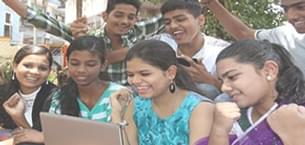
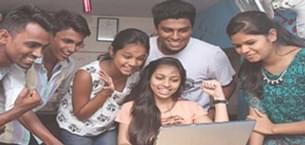
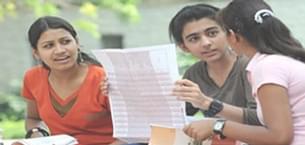
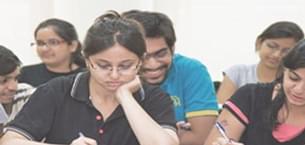


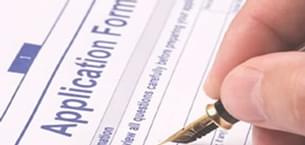

Comments
Found 2 Comments
With an F1 visa, you're typically allowed to stay in the US for the duration of your academic program, plus a grace period. This usually means you can stay as long as you're enrolled full-time in an accredited educational institution and making satisfactory progress towards your degree. After completing your program, you're given a grace period of 60 days to either leave the country, apply for a change of status, or transfer to another educational program.
Hi Sakshi,
Among the 698,773 F1 visa applicants in 2023, USA issued 445,418 student visas, rejecting 253,355 visa applications. About 26,844 F2 visas were issued out of the 50,688 applications, reflecting an acceptance rate of 52.95%.